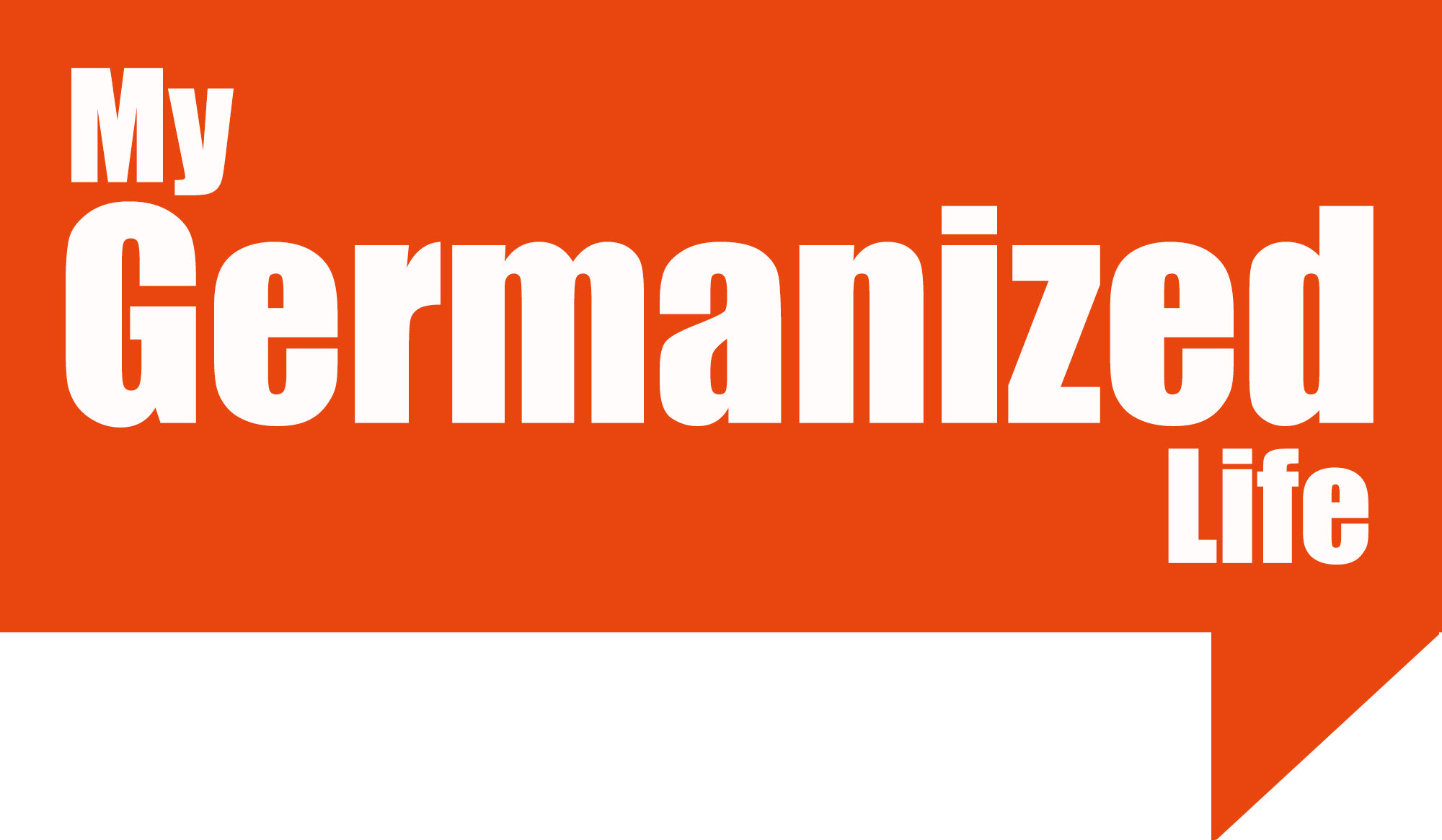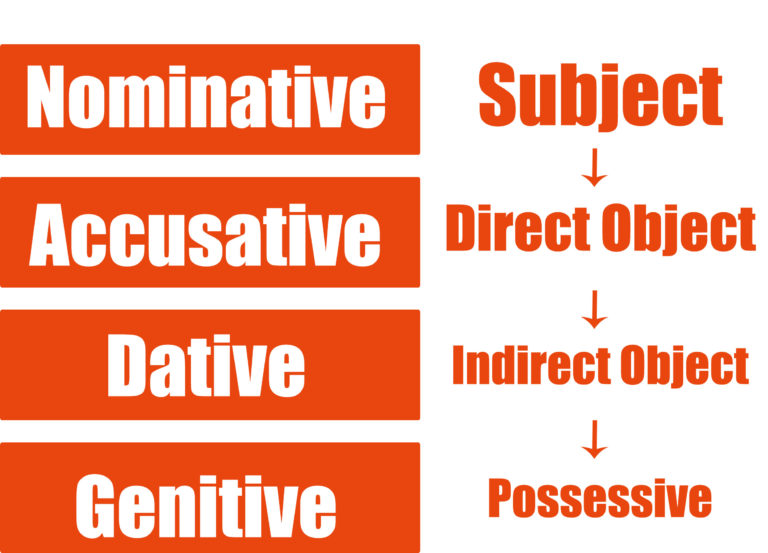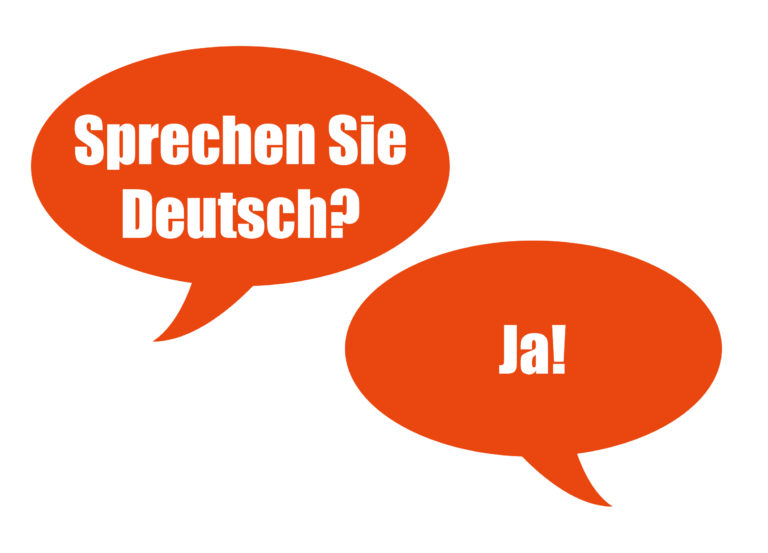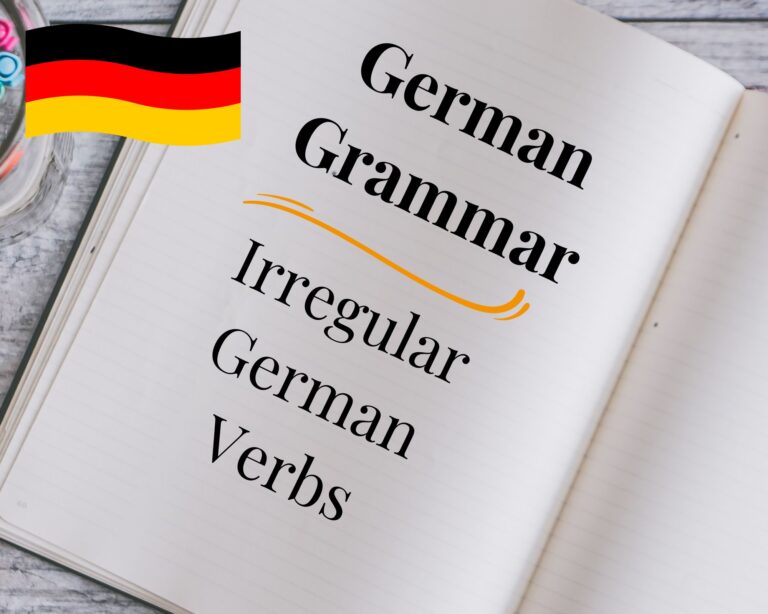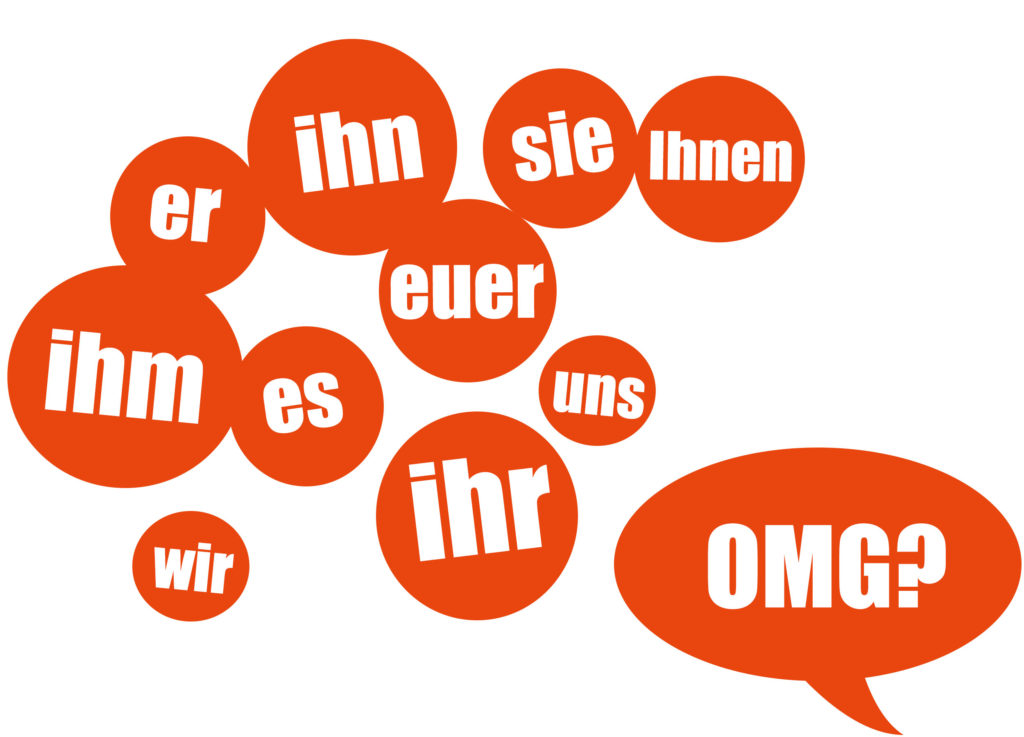
Pronouns are words like I, you, he, him, she, her, and it that we use in place of people or objects’ names. Learning the pronouns in German can be simple if you take the right approach. But you’ll need to learn more about four aspects of the language before you can use the pronouns correctly.
I know what you’re thinking, “Oh no, here we go again with more interwoven German grammar.” When you’re bombarded with so many intimidating concepts at once, it’s tempting to throw in the towel.
But if you break down the grammar into manageable tidbits, you might discover that German grammar is easier than in English! That’s because German pretty much always follows a system of logical rules that make sense once you learn them. In contrast, English grammar often has tons of exceptions that follow no rhyme and no reason.
Table of Contents
- What’s the Deal with German Pronouns?
- What are the German Pronouns?
- Why is the German Case System Budding in on Personal Pronoun Business?
- Putting Personal Pronouns into Action
- The “Other” German Pronouns
- German Possessive Pronouns
- German Reflexive Pronouns
- German Demonstrative Pronouns
- German Indefinite Pronouns
- Final Thoughts
Eyes too tired to read? Watch or listen to this lesson as a video.
What’s the Deal with German Pronouns?
Unfortunately, you can’t just learn the German pronouns and start tossing them into sentences. Well, you could try to speak German this way, but you’d have a challenging time choosing the correct pronoun form.
A few factors come into the picture when you’re faced with choosing which German pronoun to use. Once you become familiar with German, you’ll automatically choose the correct forms. Until then, ask the following questions as a guide to selecting the correct pronoun.
- Person – Which subject are you replacing with a pronoun? (I, you, he, she, it, us, etc.)
- Case – Is the pronoun the subject, direct object, indirect object, or possessive object? German grammar uses a case system that affects which pronoun you’ll need.
- Gender – What is the gender of the noun following the pronoun? German nouns have one of three genders, which determines the ending of your pronoun.
- Number – Is the pronoun singular or plural? In many cases, but not all, the feminine and plural are the same or similar.
Now that you know how to select a pronoun let’s look at the pronouns themselves. Remember, you shouldn’t expect to remember every detail the first time you learn it. Repetition and regular exposure to the German language will help these concepts come together over time.
What are the German Pronouns?
First, let’s look at personal pronouns, the simplest and most used pronouns. Personal pronouns replace proper names of people. Some examples in English include I, you, he, she, it, they, us, we, etc.
Below is a complete chart that you can use as a reference while you learn and practice German pronouns. The table includes the personal pronouns and forms according to person, case, and number. Later, you’ll learn how gender impacts the pronoun’s ending.
| Personal Pronoun | Nominative Case | Accusative Case | Dative Case | Genitive Case |
| I | ich | mich | mir | meiner |
| You (formal) | Sie | Sie | Ihnen | Ihrer |
| You (informal) | du | dich | dir | deiner |
| You (plural) | ihr | euch | euch | euer |
| He | er | ihn | ihm | seiner |
| She | sie | sie | ihr | ihre |
| It | es | es | ihm | seiner |
| We | wir | uns | uns | unser |
| They | sie | sie | ihnen | ihrer |
You probably noticed that there are way too many ways to say “you” and that “ihr” is popping up all over the place. In German, you’ll frequently use the informal version of “you” to speak with friends, colleagues, and many strangers or acquaintances your age. The formal form in business and socially formal settings.
I recommend reviewing the German Case System before moving ahead. However, to make sense of all these different pronouns, let’s begin by learning how the German cases affect your pronoun choices.
Why is the German Case System Budding in on Personal Pronoun Business?
I know the German case system is like an unwanted party guest that keeps returning to all your gatherings. But German grammar does require you to become comfortable identifying the subjects, direct objects, and indirect objects of sentences. Luckily, you can easily learn how to identify these sentence elements and assign the proper pronoun, and yes, it gets easier with practice.
The Nominative Case and Personal Pronouns
The SUBJECT of your sentence takes a nominative case pronoun. The subject is the primary noun initiating action in your sentence.
Example: I gave it to her. (Ich habe es ihr gegeben.)
Here, “I” and “ich” are the sentence subjects and take the nominative case pronoun in German. If you think about the pronouns in English, you won’t use “me” or “my” for a sentence subject. The only difference is that you may know actively be aware that you are using this grammar because the language comes to you naturally.
The Accusative Case and Personal Pronouns
The DIRECT OBJECT in your sentence takes an accusative case pronoun like “it” or “them.” The direct object is typically a thing that receives the subject’s action.
Example: I gave it to her. (Ich habe es ihr gegeben.)
Here, the pronoun “it” is taking the place of whatever object the subject is giving. But, of course, you can use other accusative pronouns in this way as well.
The Dative Case and Personal Pronouns
The INDIRECT OBJECT in your sentence uses dative case pronouns. Indirect objects are receiving an action from the subject and its direct object. In English, you would use a pronoun like “me,” “her,” or “him.”
Example: I gave it to her. (Ich habe es ihr gegeben.)
Here, the indirect object “her” is receiving the direct object “it” from the subject “I.” You can replace dative case indirect objects with a corresponding dative pronoun from the table.
Putting Personal Pronouns into Action
Let’s look at some examples of personal pronouns and their roles in sentences. The different pronoun types are highlighted in orange for clarity.
Subject Pronouns (Nominative Case)
Below are examples of subject pronouns that take the nominative case.
Example 1: You (informal) forgot. (Du hast vergessen.)
Example 2: We already know. (Wir wissen schon.)
Example 3: It is late. (Es ist spät.)
Example 4: I am happy. (Ich bin glȕcklich.)
Example 5: She works early. (Sie arbeitet frȕh.)
Example 6: He is young. (Er ist jung.)
Example 7: Sie haben Zeit. (They have time.)
Direct Object Pronouns (Accusative Case)
Let’s look at examples of direct objects in the accusative case receiving actions from the subjects.
Example 1: You forgot us. (Du hast uns vergessen.)
Example 2: We already know him. (Wir kennen ihn schon.)
Example 3: I love you. (Ich liebe dich.)
Example 4: He likes them. (Er mag sie.)
Example 5: You taught her. (Du hast sie gelehrt.)
Example 6: I hear it now. (Ich hȍre es jetzt.)
Example 7: She sees me. (Sie sieht mich.)
Indirect Object Pronouns (Dative Case)
Next, let’s examine sentences with three nouns where one pronoun is an indirect object.
Example 1: You (subject) forgot to give us (indirect object) the book (direct object). (Du hast vergessen uns das Buch zu geben.)
Example 2: We (subject) gave her (indirect object) the message (direct object). (Wir haben ihr die Nachricht gegeben.)
Example 3: I (subject) bought him (indirect object) an ice cream (direct object). (Ich habe ihm ein Eis gekauft.)
Example 4: We (subject) are baking them (indirect object) a cake (direct object). (Wir backen ihnen einen Kuchen.)
Example 5: She (subject) made you (indirect object) a gift (direct object). (Sie hat dir ein Geschenk gemacht.)
Example 6: He’s (subject) telling you guys (indirect object) something (direct object) important. (Er erzählt euch etwas Wichtiges.)
Example 7: You (subject) gave me (indirect object) a ticket (direct object). (Du hast mir ein Ticket gegeben.)
The “Other” German Pronouns
Besides personal pronouns, German also has possessive, reflexive, indefinite, and demonstrative pronouns. These terms are simply fancy names for everyday words you use all the time. Let’s look at possessive pronouns next.
German Possessive Pronouns
You use possessive pronouns to talk about something that belongs to someone else. Sometimes, you’ll need to attach an ending to your German possessive pronouns, depending on the gender and case of the following noun.
Getting the endings correct for German possessive pronouns will require some background knowledge of Adjective Endings and the German Case System. That’s why I recommend mastering the previous sections before moving on to grammar topics that become increasingly complex.
| Pronoun “my” (mein) | Masculine | Feminine | Neuter | Plural |
| Nominative | mein | meine | mein | meine |
| Accusative | meinen | meine | mein | meine |
| Dative | meinem | meiner | meinem | meinen |
Wow! That’s a lot of different ways you can say “my.” Overall, there are five options: no ending, -e, -er, -en, or -em. Notice that the masculine and neuter endings are the same. The feminine and plural endings are also the same, meaning you really only need to remember the first two columns.
Learning German Possessive Pronouns, the Easy Way
The same endings apply to other possessive pronouns.
| Possessive Pronoun | German Possessive Pronoun |
| My | mein |
| Yours (informal) | dein |
| Yours (formal) | Ihr |
| Yours (plural) | euer (eur-) |
| Hers | ihr |
| His | sein |
| Its | sein |
| Our | unser |
| Their | ihr |
A few examples will help clarify how possessive pronouns work.
Example 1: I put my book on the table. (Ich habe mein Buch auf den Tisch gelegt.)
Here, “my book” is the accusative, direct object. The book takes the neuter gender in German and doesn’t require an ending.
Example 2: I put the book on my table. (Ich habe das Buch auf meinen Tisch gelegt.)
Here, “my table” is also accusative, but the table is a masculine noun in German. Consequently, you need to assign an -en ending.
Example 3: His book and her lamp are on our table. (Sein Buch und ihre Lampe liegen auf unserem Tisch.
Here, you have a neuter noun “book” and a feminine noun “lamp” in the accusative case. The phrase “on our table” is dative, and because we have the masculine noun “table,” you use an -em ending.
German Reflexive Pronouns
Reflexive pronouns are words like myself, yourself, himself, herself, ourselves, etc. Although German uses reflexive pronouns in sentences where English doesn’t, the concept behind how they work is similar. Reflexive pronouns only pop up in the accusative and dative cases.
| Pronoun | Accusative Case | Dative Case |
| myself | mich | mir |
| Yourself formal | sich | sich |
| Yourself informal | dich | dir |
| Yourself plural | euch | euch |
| Himself | sich | sich |
| Herself | sich | sich |
| Itself | sich | sich |
| Ourselves | uns | uns |
| Themselves | sich | sich |
Compared to English, German has more verbs that require reflexive pronouns. Unfortunately, you’ll have to memorize which verbs are reflexive. Through exposure to the language, you’ll learn when to use reflexive pronouns.
Most Common Reflexive Verbs in the German Accusative Case
Below are some common German verbs beginner speakers need in the accusative reflexive.
| Reflexive Verb (Accusative) | English Meaning |
| sich anziehen | to get dressed |
| sich ausziehen | to get undressed |
| sich baden | to bath oneself |
| sich befinden | to be located |
| sich beschweren (über) | to complain about |
| sich duschen | to shower |
| sich freuen | to be glad |
| sich fühlen | to feel |
| sich informieren | to inform oneself |
| sich interessieren | be interested in |
| sich kämmen | to comb |
| sich legen | to lie (down) |
| sich rasieren | to shave |
| sich setzen | to sit |
| sich stellen | to stand |
| sich treffen | to meet |
| sich verabschieden | to say goodbye |
| sich verletzen | to injure oneself |
| sich vorstellen | to introduce oneself |
| sich waschen | to wash oneself |
Now it’s time to see the accusative reflexive verbs and pronouns in action.
Example 1: I’m getting dressed. (Ich ziehe mich an.)
You don’t say that you’re dressing yourself in English, but many German verbs are reflexive when they wouldn’t be in English.
Example 2: You are shaving. (Du rasierst dich.)
Translated, the German sentence would read, “I’m shaving myself.”
Example 3: She is glad. (Sie freut sich.)
Example 4: We’re saying goodbye. (Wir verabschieden uns.)
Example 5: You guys complain about everything. (Ihr beschwert euch ȕber alles.)
Example 6: I’m sitting down. (Ich setze mich.)
Example 7: He’s informing himself. (Er informiert sich.)
Most Common Reflexive Verbs in the German Dative Case
There are far fewer reflexive verbs beginner speakers need to worry about in the dative reflexive. Nevertheless, here are a few that you may frequently use during the start of your language studies.
| Reflexive Verb (Dative) | English Meaning |
| sich etwas bürsten | to brush something |
| sich etwas kämmen | to comb something |
| sich etwas anziehen | to put something on |
| sich etwas ausziehen | to take something off |
| sich etwas putzen | to clean something |
| sich wehtun | to hurt oneself |
Most of these dative reflexive verbs include direct objects, making the previous reflexive pronoun a dative, indirect object.
Example: I brush. (Ich bürste mich.)
Example: I brush my hair. (Ich bürste mir die Haare.)
The addition of a direct object, “the hair,” means our reflexive pronoun transitions from the accusative to the dative case.
Example: I’m getting dressed. (Ich ziehe mich an.)
Example: You’re putting on the pants. (Du ziehst dir die Hose an.)
Similarly, the reflexive pronoun above takes the dative form because a direct object, “the pants,” joined the sentence.
Example: We hurt ourselves. (Wir haben uns wehgetan.)
This dative reflexive verb is truly dative and doesn’t require a direct object.
German Demonstrative Pronouns
Words such as this, that, those, and these are demonstrative pronouns that function similarly in German and English. There’s good news, and there’s bad news. First, I’ll share the good news. The stem word for all four of the English demonstrative pronouns is a single pronoun, “dies.”
Now, the not so fantastic news. Like many other aspects of German, the ending of “dies” depends on the pronoun’s case, gender, and number.
| Demonstrative Pronoun “dies” | Masculine | Feminine | Neuter | Plural |
| Nominative | er | e | es | e |
| Accusative | en | e | es | e |
| Dative | em | er | em | en |
It’s time for a few examples to explain.
Example: Give me those apples. (Gib mir diese Äpfel.)
Here, “those” is represented by a plural, accusative demonstrative pronoun ending -e.
Example: We’re moving this table. (Wir verschieben diesen Tisch.)
In this example, “this” is represented by a masculine, accusative demonstrative pronoun ending -en.
German Indefinite Pronouns
Anybody, somebody, and nobody are examples of indefinite pronouns. In German, these pronouns are useful when there is no specified noun.
| Indefinite Pronoun | German Pronoun (Nom., Acc., Dat.) |
| Everyone/anyone | jeder, jeden, jedem |
| Nobody | niemand, niemanden, niemandem |
| Nothing | nichts |
| Someone | jemand, jemanden, jemandem |
| Something | etwas |
The indefinite pronouns “nichts” and “etwas” don’t receive endings, but the other pronouns receive endings according to the case, gender, and number.
Example: Does someone know him? (Kennt ihn jemand?)
Example: Someone knows him. (Jemand kennt ihn.)
As a sentence and a question, the above examples use the nominative case.
Example: We invited nobody. (Wir haben niemanden eingeladen.)
Here, the indefinite pronoun is a direct object and takes an accusative, -en ending.
Final Thoughts
There’s a lot more to German pronouns than what meets the eye. However, if you tackle each concept step-by-step, you can learn the pronouns in German by building a foundation that expands over time. So, instead of learning everything about German pronouns in a single sitting, return to the topic repeatedly and break it down into shorter sessions.
The more familiar you become with the German case system and adjective endings, the more you’ll understand pronouns each time you return to the topic. In the meantime, why not practice your speaking skills with my Basic Pronunciation Guide.
